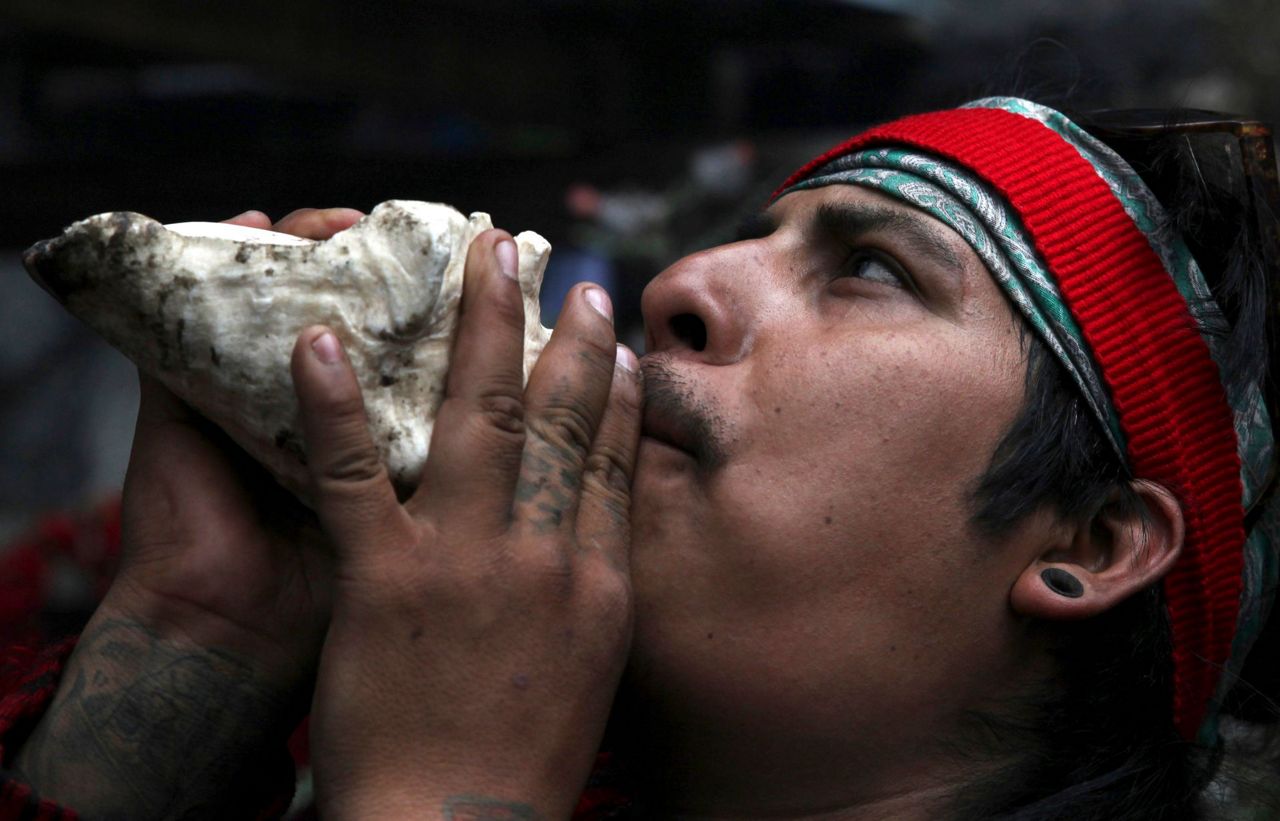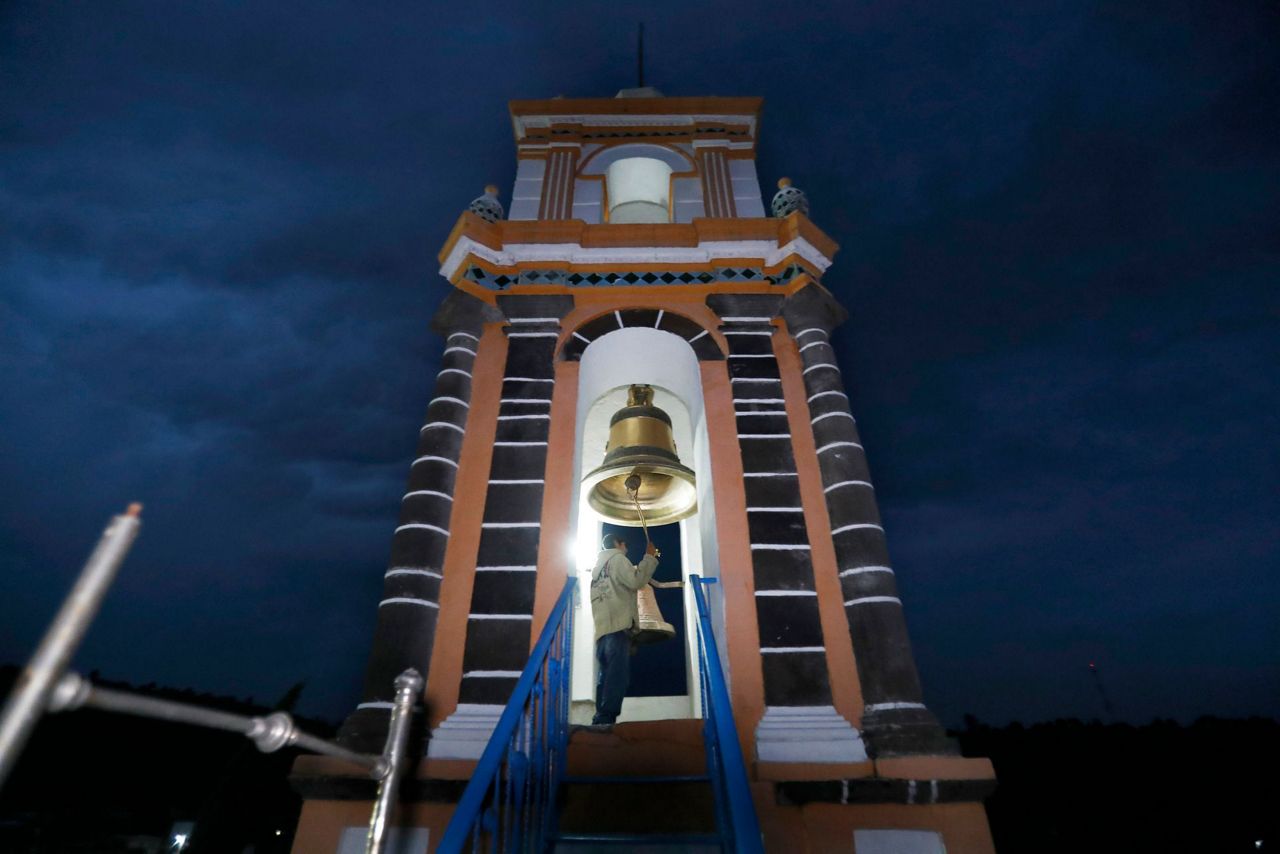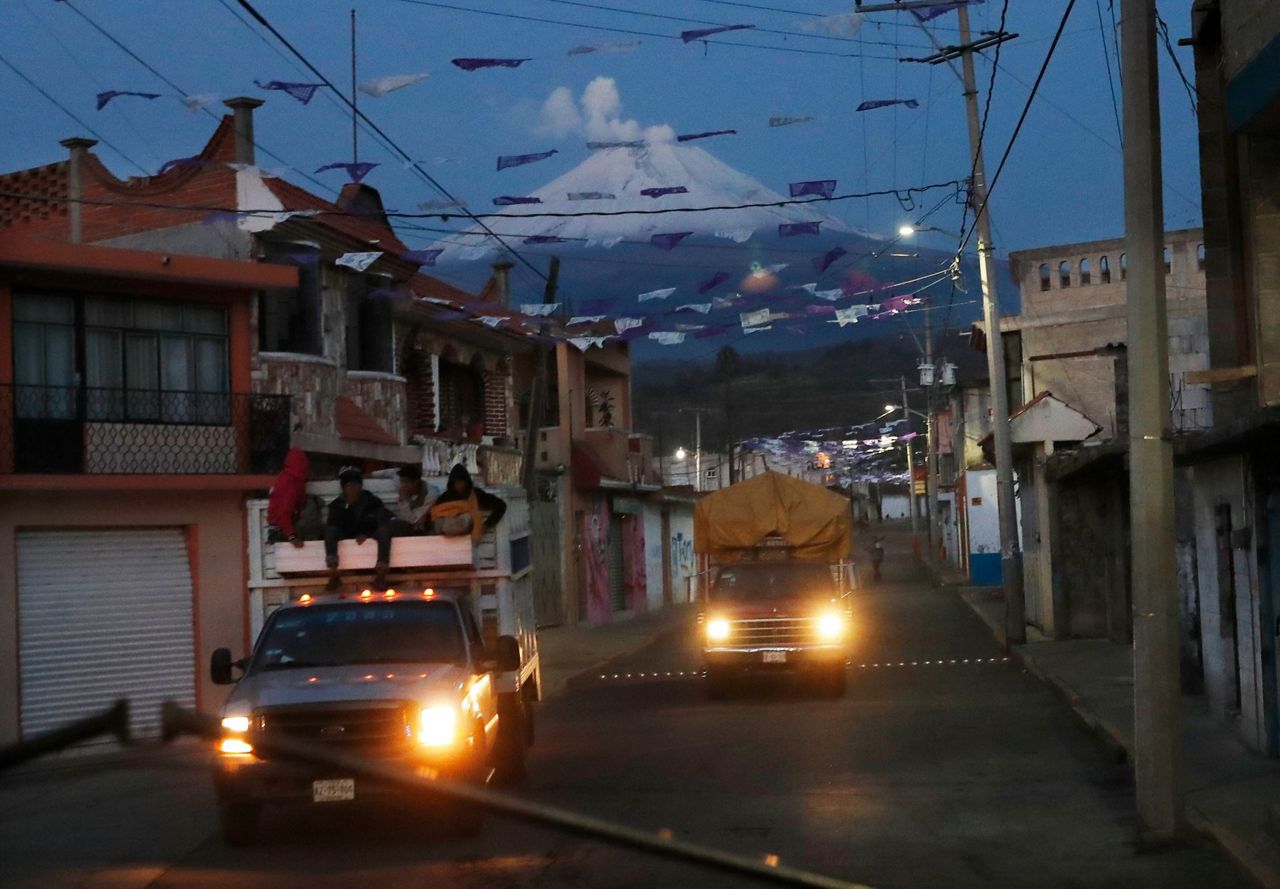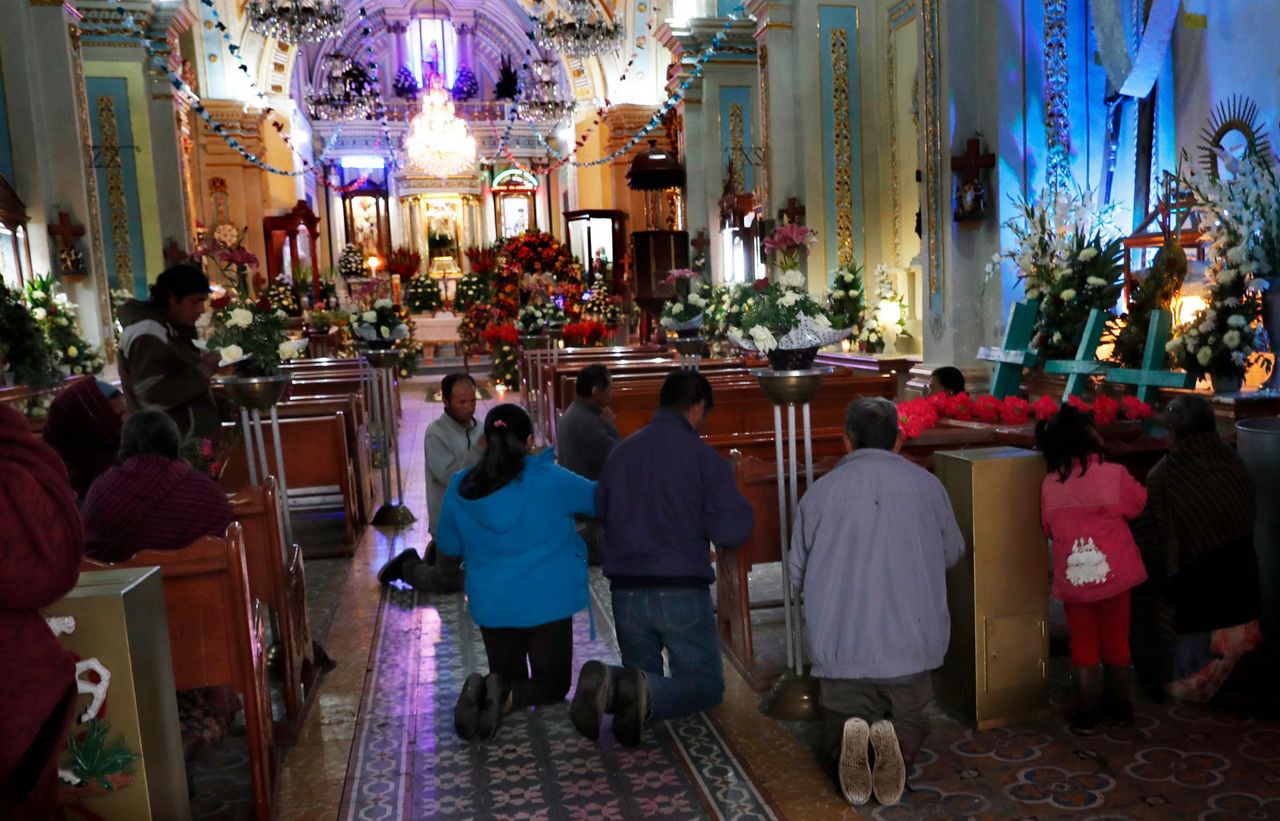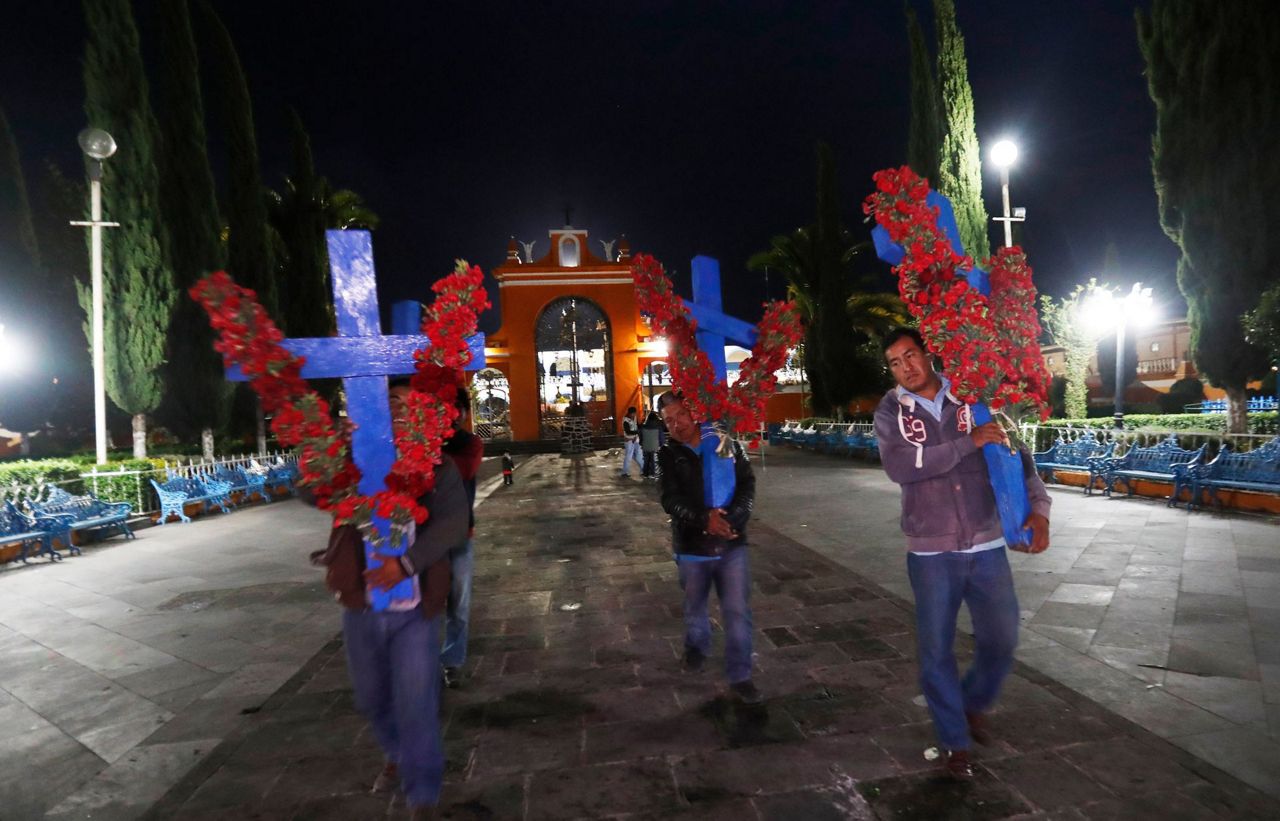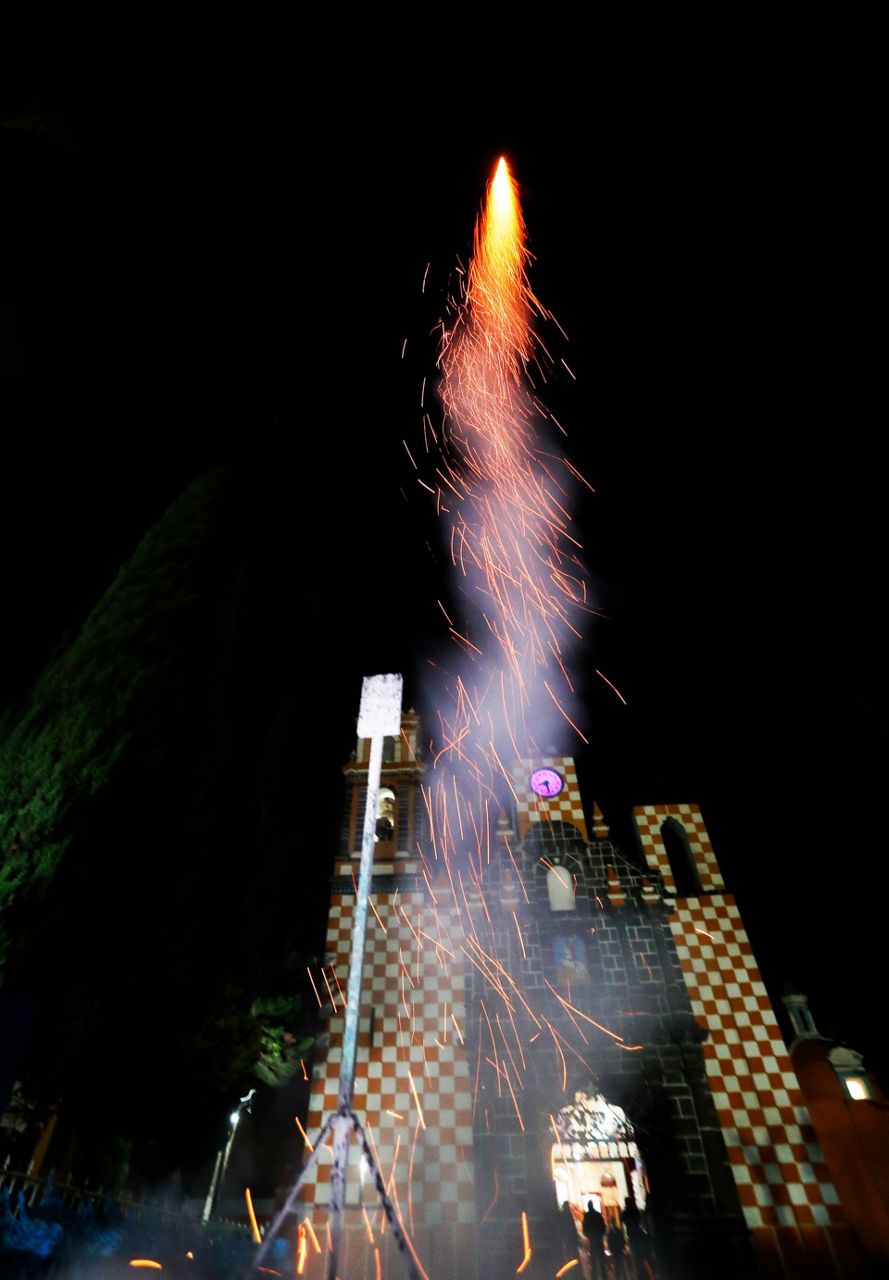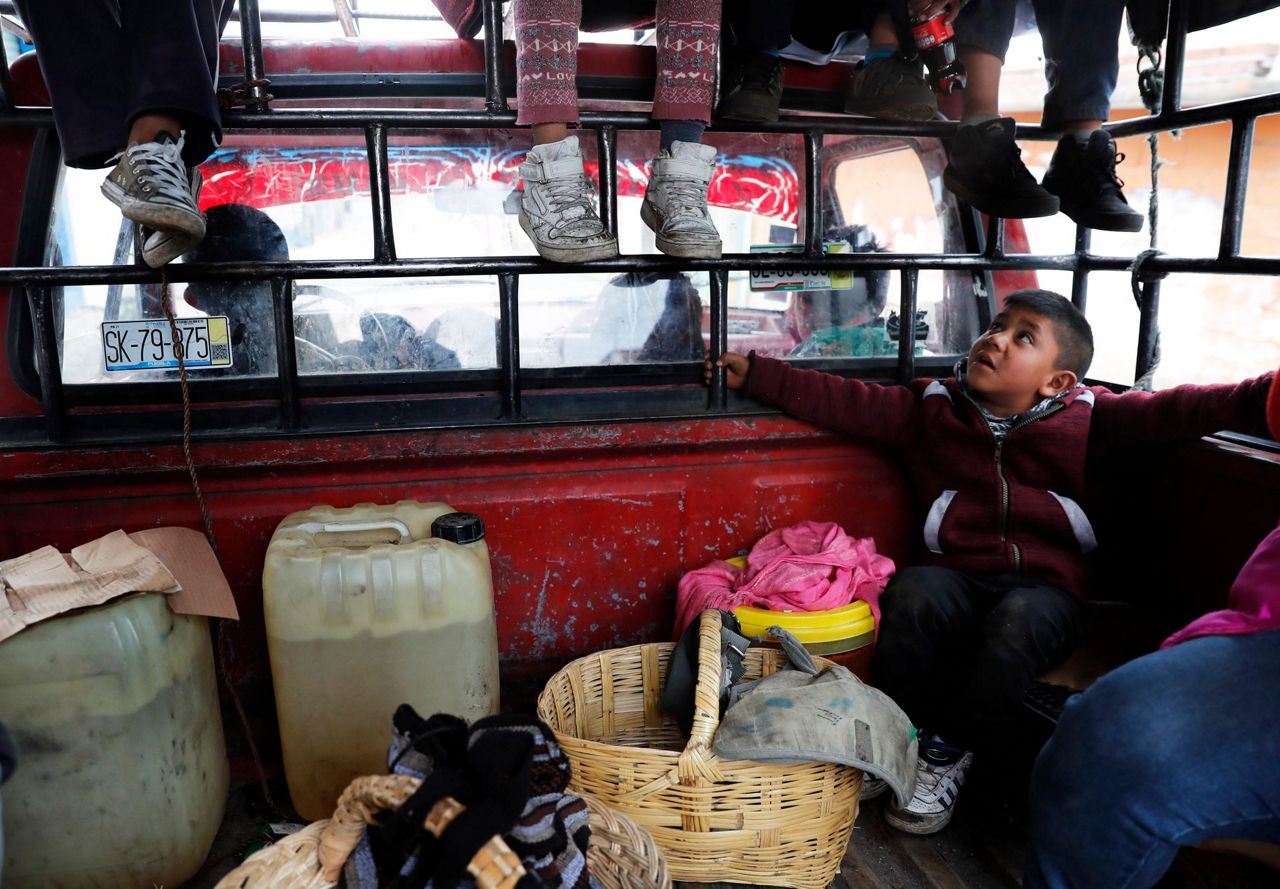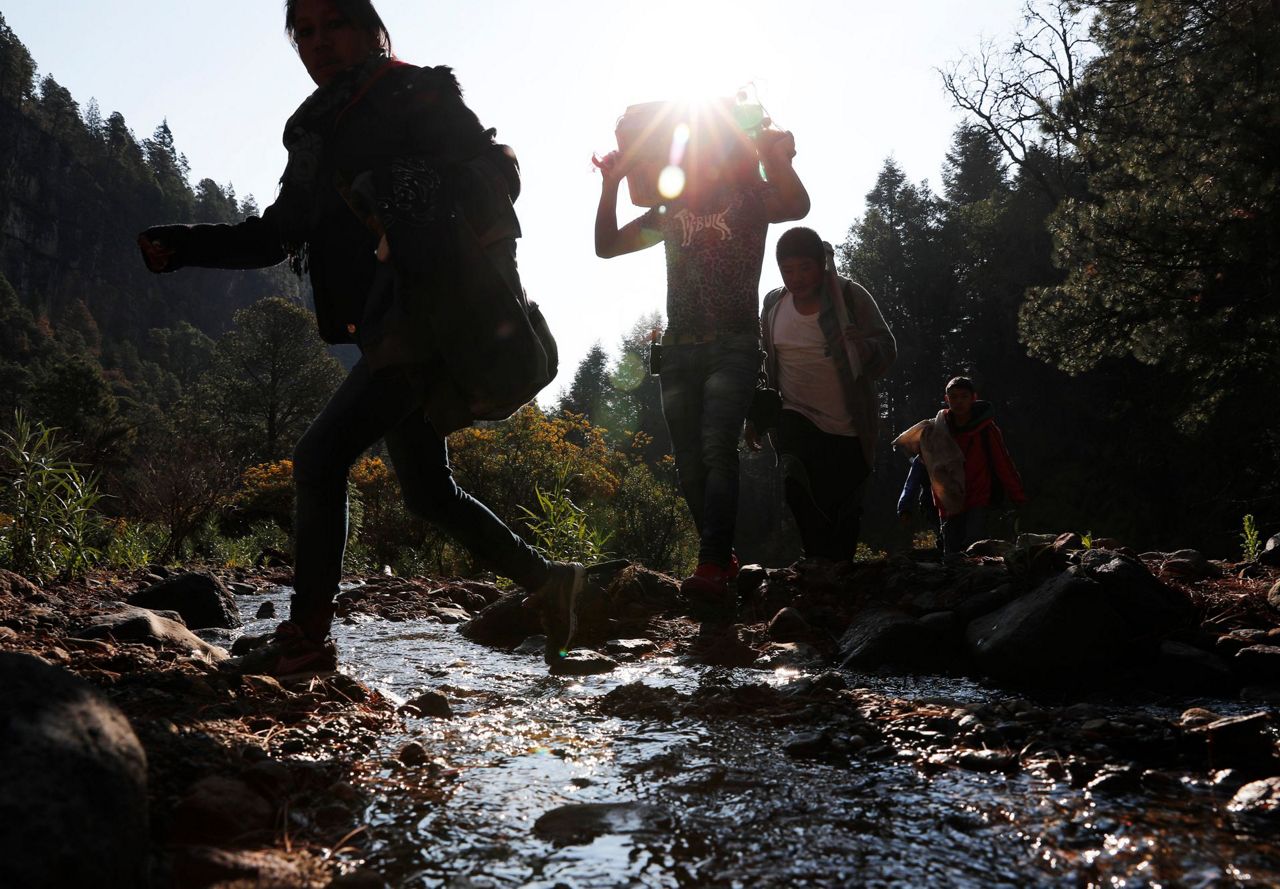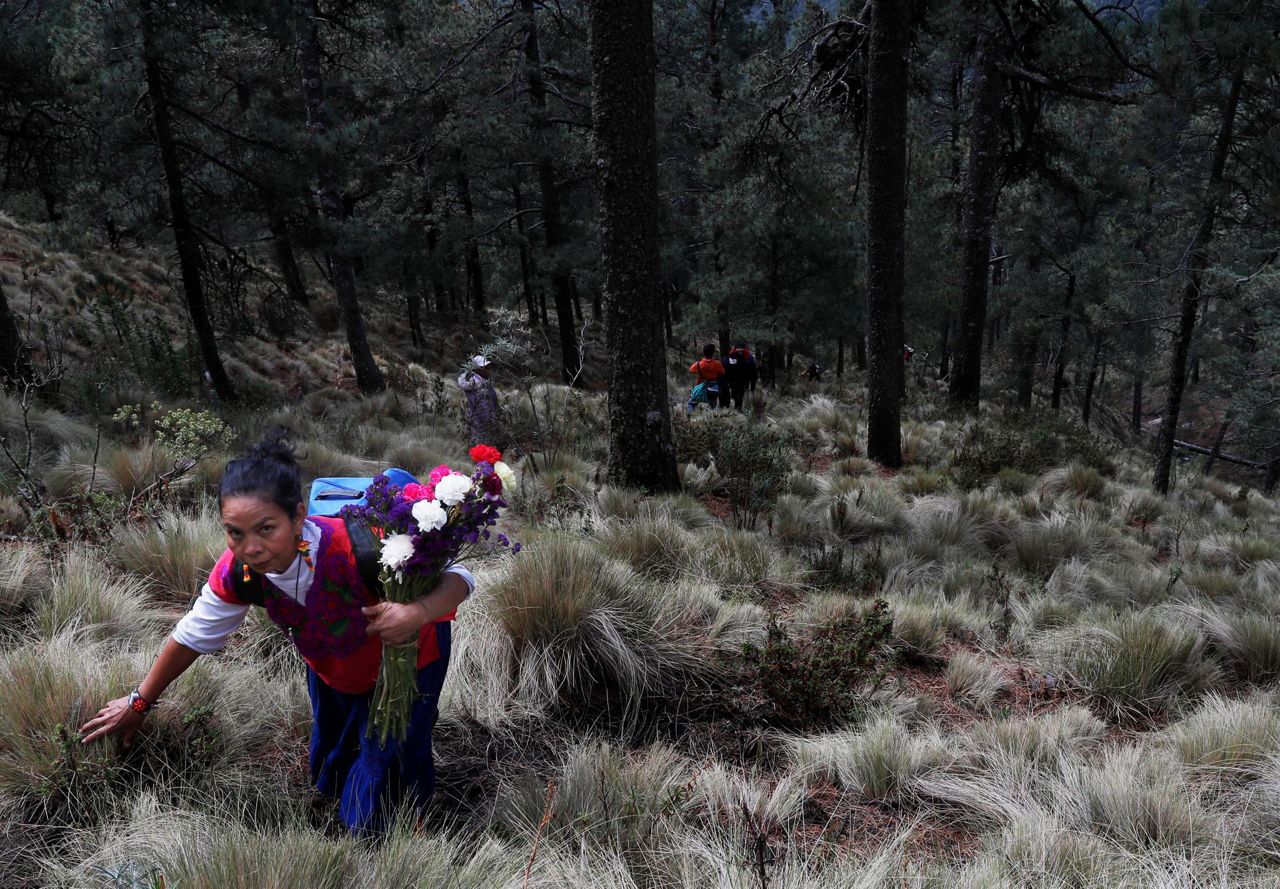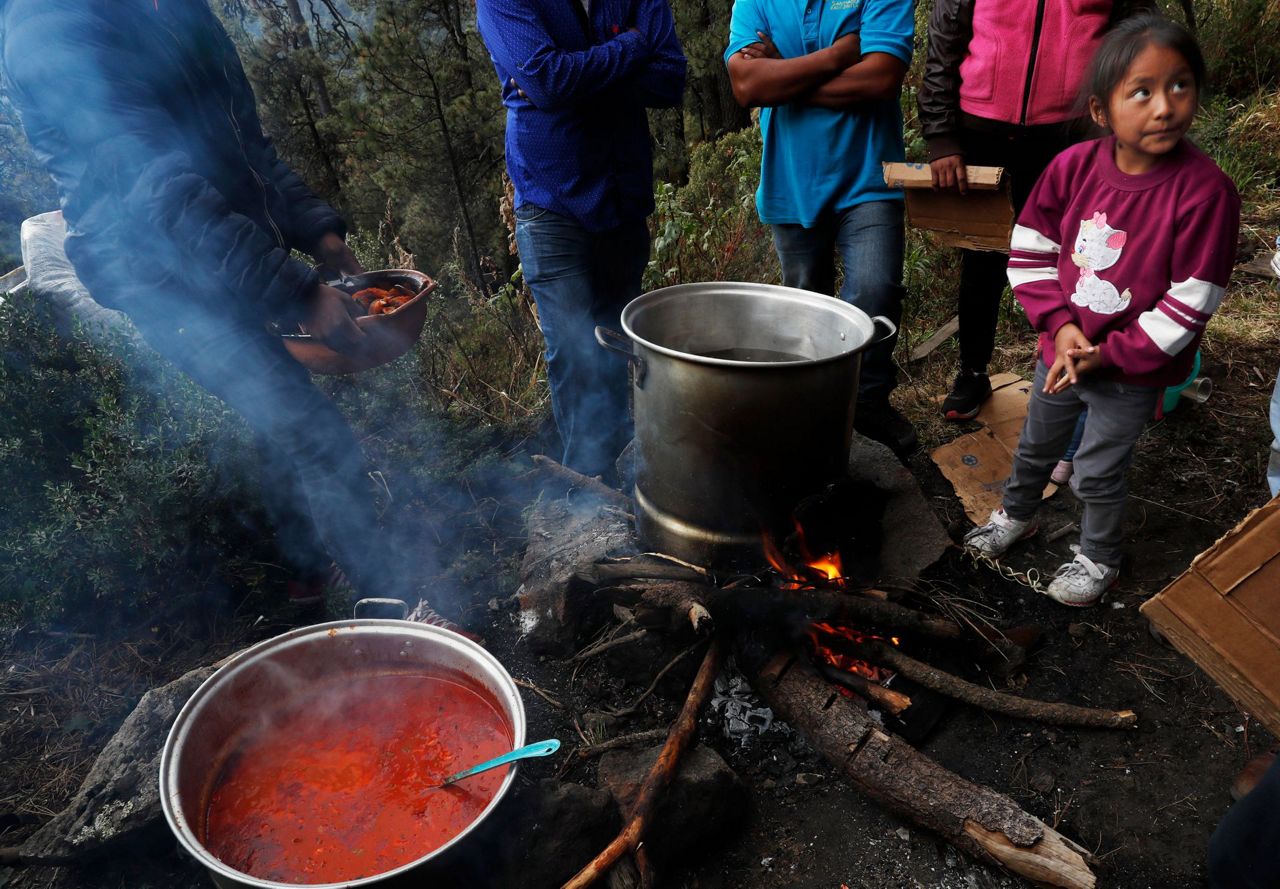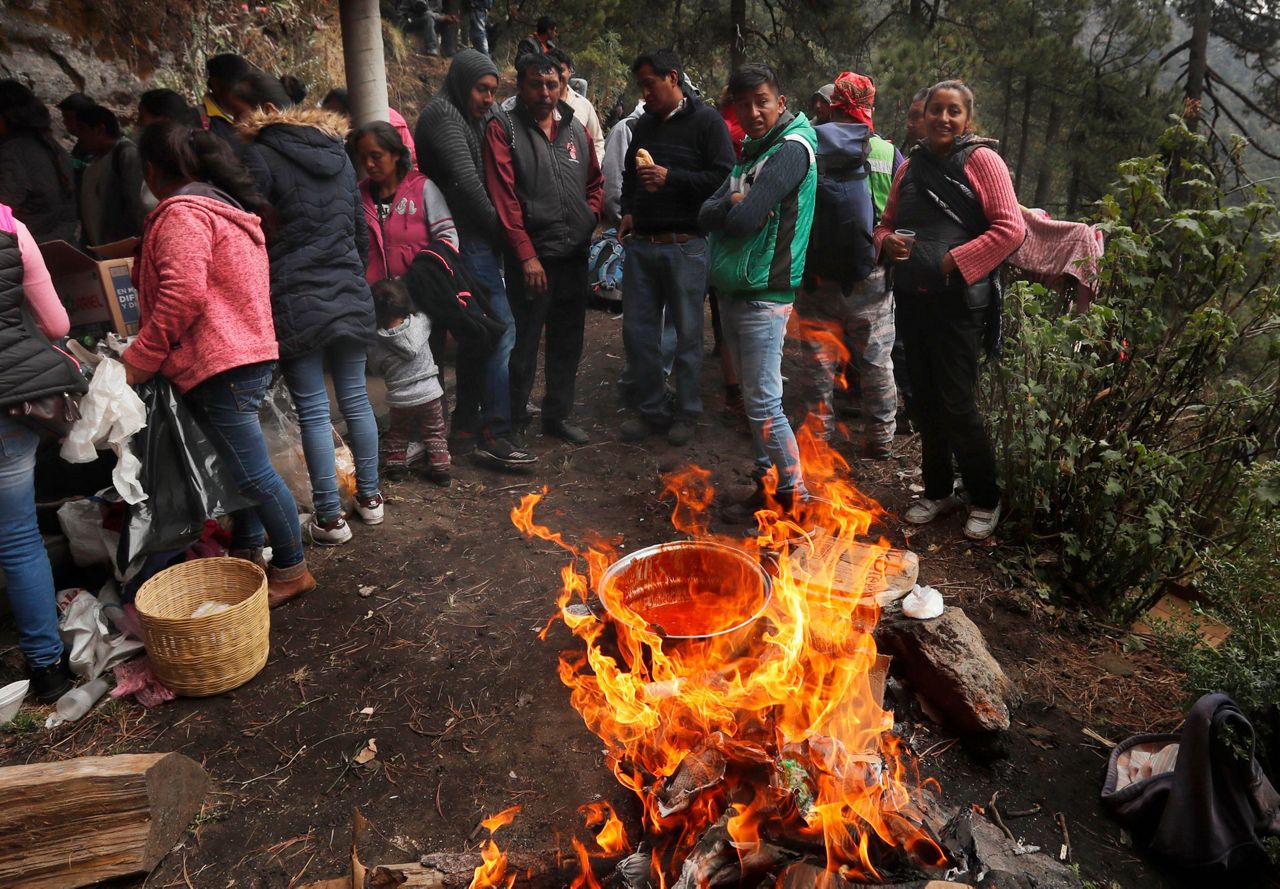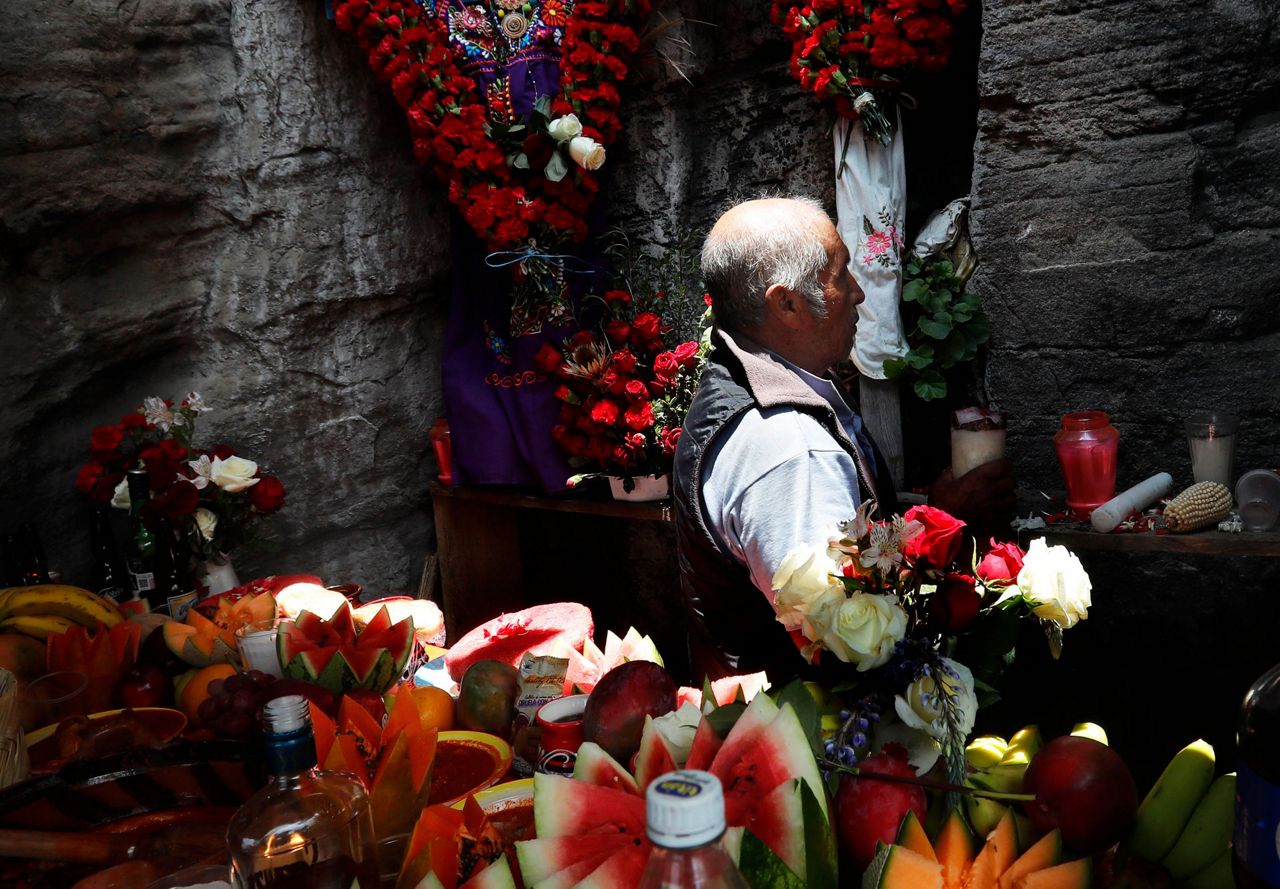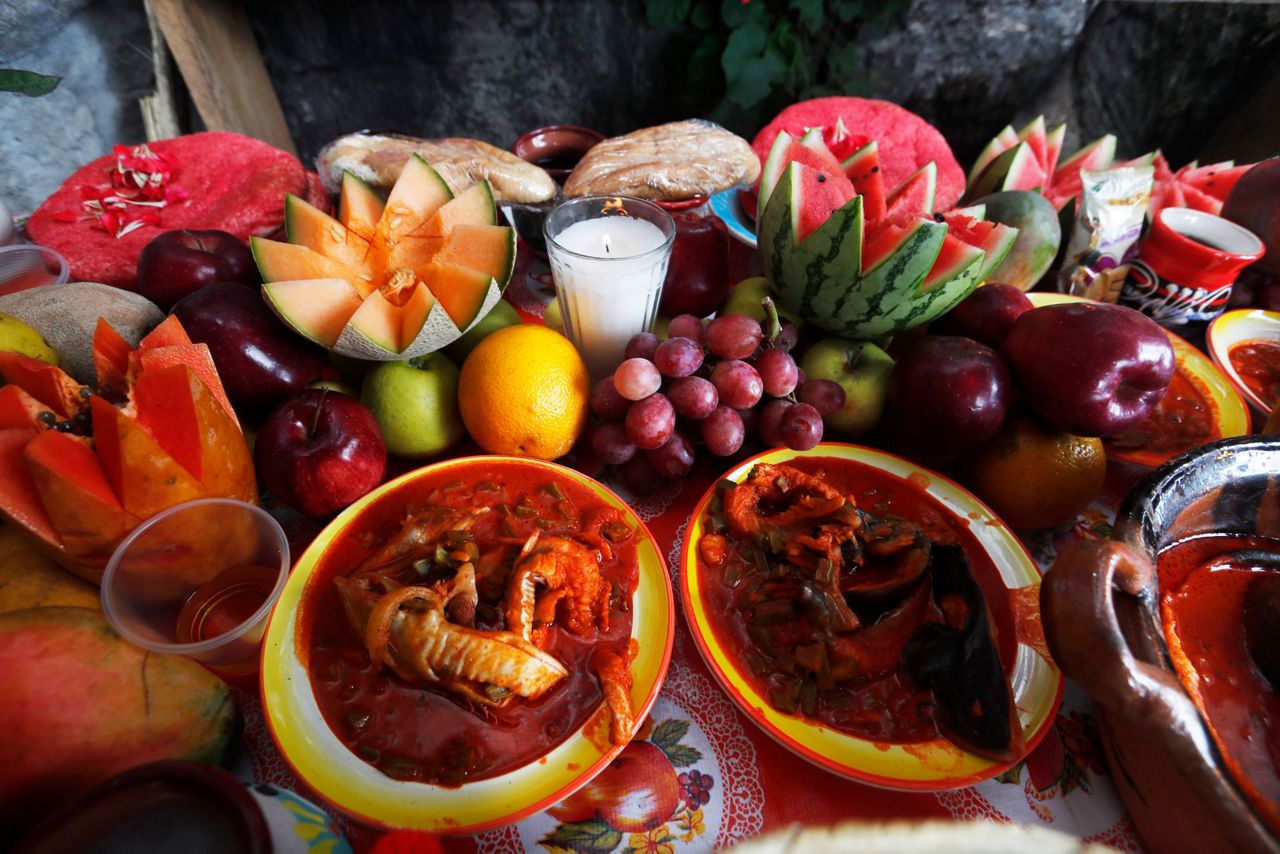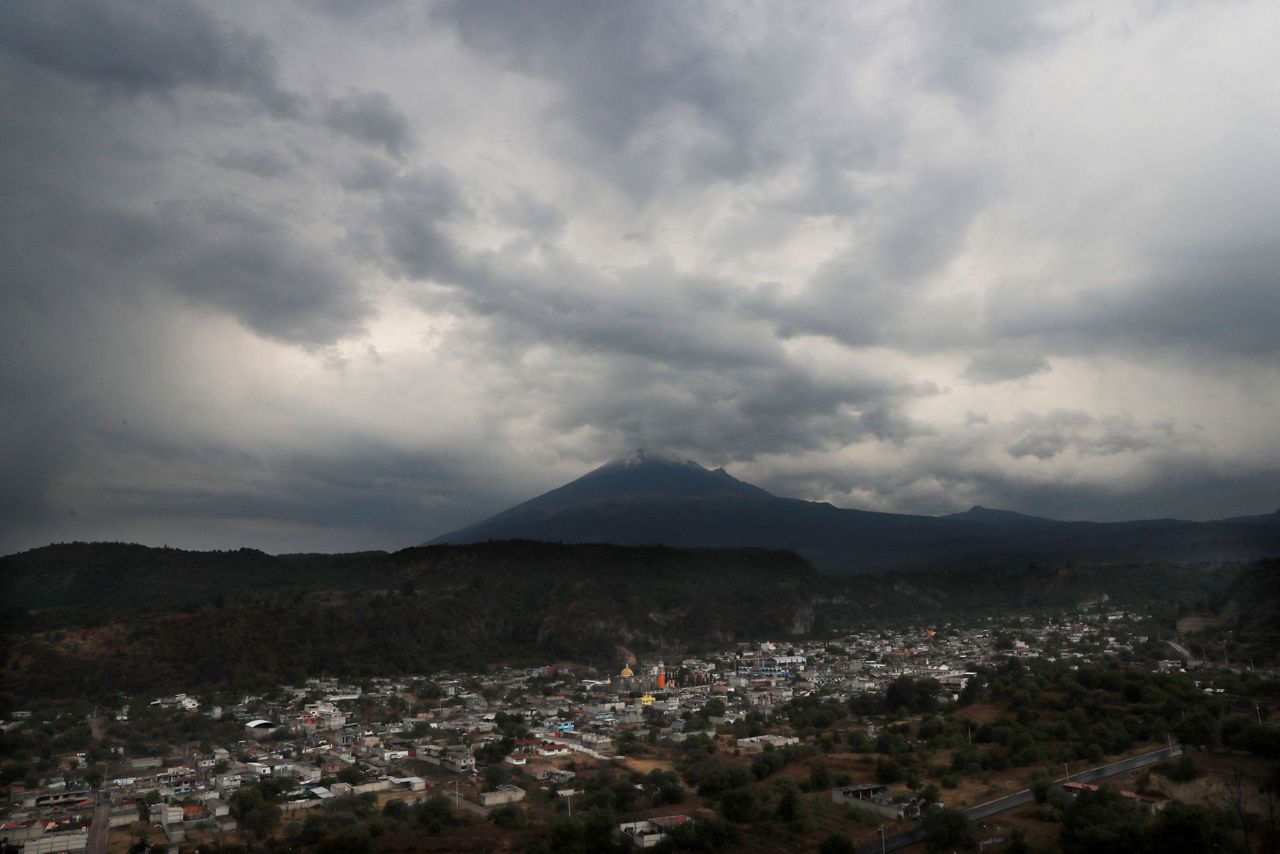SANTIAGO XALITZINTLA, Mexico (AP) — The inhabitants of Santiago Xalitzintla rise well before dawn to prepare their offerings to The Sleeping Woman, as they affectionately call the dormant Iztaccíhuatl volcano that hovers above their town in central Mexico.
There are potatoes to fry for the feast, and heaping bunches of red carnations to lug up to the stone altar 3,800 meters (12,470 feet) above sea level. Hundreds of villagers —including infants, preschool-aged children and the elderly— make the biannual three-hour trek through steep pine forest and past babbling brooks to ask for the volcano's aid and protection. They beseech her to bring rain for their crops, shield their harvests from hail and calm the ashy exhalations of her neighbor, the unnervingly active Popocatepetl volcano.
Veronica Agustin says the community has gotten used to living with Don Goyo, a nickname for Popocatepetl. When Don Goyo gets angry, the ground vibrates, doors and windows shake -- she compares the sound to that of beans cooking in boiling water. "The scare passes," says Agustin.
Santiago Xalitzintla has the distinction of being the community closest to Popocatepetl, whose crater has increasingly been belching lava and spewing ash that sometimes reaches Mexico City, 90 kilometers (55 miles) to the northwest. The community is now on evacuation alert, with alarms sounding to tell residents when they should escape to the nearby city of Cholula.
The hike to pay homage to The Sleeping Woman — the volcano's silhouette resembles a reclining female — is a tradition that goes back generations. The residents of Santiago Xalitzintla celebrate over two days in early May, shooting fireworks into the sky above their town, drinking copious amounts of tequila and cooking communal meals over open fires. Twice a year, they embark on a similar climb up Popocatepetl.
Underneath a small waterfall on the slopes of Iztaccihuatl, the offerings are laid out on an altar. There are papayas and watermelons carved into flower shapes, cups of milky pulque — an alcoholic beverage made from the fermented sap of the maguey plant — cobs of corn, incense and votive candles.
It's the Day of the Holy Cross, a religious holiday celebrated in many parts of Latin America that marks Byzantine Empress Saint Helena's search for the cross on which Jesus was crucified.
The ceremony at Iztaccíhuatl, though, mixes Catholic traditions with pre-Hispanic rituals and beliefs.
The pilgrims sing Catholic hymns and hold Mass to ask the Virgin Mary to forgive their sins, standing before wooden crosses draped with rosaries, flowers, shawls and dresses.
Nasario Galicia tends the altar, tucked inside a nook in the stone walls of The Sleeping Woman. He blows incense. He ladles steaming, chili-infused tripe stew into bowls and presents them to the mountain deity. Next come mugs of coffee with brown sugar and cinnamon.
Galicia, 76, has been hiking to the altar for more than 40 years. He says he has been struck by lightning, prayed to the mountain goddess and lived to tell the tale. He calls Iztaccíhuatl "Rosita," for Saint Rose, the patron saint of the indigenous people of the Americas. The villagers' next trek to Iztaccíhuatl will take place in August on the feast day of Saint Rose.
"This is a tradition that we have carried out for a long time now," says Galicia.
A conch shell is blown. Drums are beat. Maracas shake. And a song begins in the indigenous Nahuatl tongue to honor Tonantzin, the Aztec mother earth goddess who is often celebrated alongside the Virgin Mary.
Larion Hernandez, who joined the pilgrimage from another village below the volcanos called San Mateo Ozolco, explains first in Nahuatl and then in Spanish why he feels the offerings to Iztaccíhuatl are so important.
"We came to leave an offering and also to ask her, our mother of this place, to give us good harvests and also to thank her at the same time for past harvests," he says.
The harvest in this patch of Puebla state is primarily corn, the base of the Mexican diet.
"As mother earth, we should take care of her because she gives us food to eat, and we should take care of her because otherwise we will be our own extinction," concludes Hernandez.
Copyright 2019 The Associated Press. All rights reserved. This material may not be published, broadcast, rewritten or redistributed.



